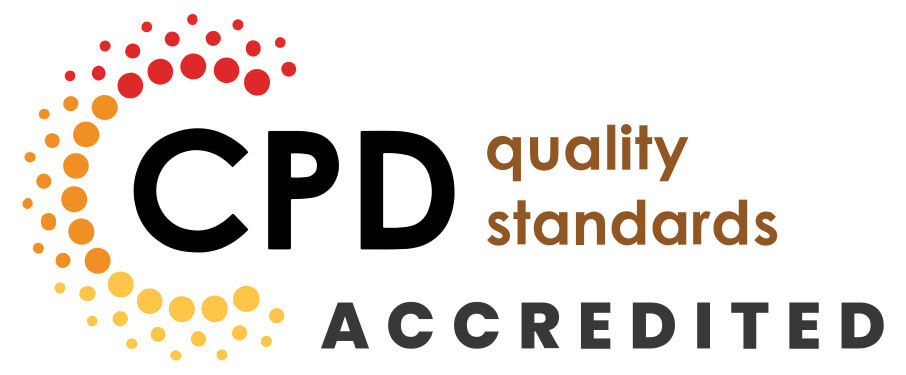5
1
1
Students
GET THIS COURSE AND 1500+ OTHERS FOR ONLY £149. FIND OUT MORE
Course Overview
Gear up to get well equipped in R Programming for Data Science now, make up your mind to be the best in the business! All you need is proper training, firm support and push to shine in your vocation, and Compliance Central is determined to provide you with it all! Explore what you got in this exclusive R Programming for Data Science, start learning and excel in it! This amazing R Programming for Data Science course has been designed and developed by the industry specialists who had been to the business for years, went through ups-and-downs, climbed up the success ladder with sheer excellence! You’ll get to-the-point knowledge both practical and theoretical, and gain valuable insights on the business which will help you understand the drill better than ever! Join today, be skilled, learn with positive energy and enthusiasm, create an excellent career using your full potential! Brace yourself, enrol now for an amazing venture!This R Programming for Data Science Course Package Includes
- Comprehensive lessons and training provided by experts on R Programming for Data Science
- Interactive online learning experience provided by qualified professionals in your convenience
- 24/7 Access to the course materials and learner assistance
- Easy accessibility from any smart device (Laptop, Tablet, Smartphone etc.)
- A happy and handy learning experience for the professionals and students
- 100% learning satisfaction, guaranteed by Compliance Central
Learning Outcome
Upon successful completion of this highly appreciated R Programming for Data Science course, you’ll be a skilled professional, besides—- You can provide services related to R Programming for Data Science with complete knowledge and confidence
- You’ll be competent and proficient enough to start a R Programming for Data Science related business on your own
- You can train up others and grow an efficient peer community on your locality and serve people
- It will enhance your portfolio, you can use the certificate as proof of your efficiency to the employer
- It will boost up your productivity, you can use the skill and credentials, and become more competent in your vocation with increased earning!
Certification
You can instantly download your certificate for £4.79 right after finishing the R Programming for Data Science course. The hard copy of the certification will also be sent right at your doorstep via post for £10.79. All of our courses are continually reviewed to ensure their quality, and that provide appropriate current training for your chosen subject. As such, although certificates do not expire, it is recommended that they are reviewed or renewed on an annual basis.Who Is This Course For
Compliance Central aims to prepare efficient human resources for the industry and make it more productive than ever. This helpful course is suitable for any person who is interested in R Programming for Data Science. There are no pre-requirements to take it. You can attend the course if you are a student, an enthusiast or a- Employee
- Employer
- Manager
- Supervisor
- Entrepreneur
- Business Professional
- Company Leader
- HR Professional
Course Currilcum
-
- Introduction to Data Science 00:01:00
- Data Science: Career of the Future 00:04:00
- What is Data Science? 00:02:00
- Data Science as a Process 00:02:00
- Data Science Toolbox 00:03:00
- Data Science Process Explained 00:05:00
- What’s Next? 00:01:00
-
- Engine and coding environment 00:03:00
- Installing R and RStudio 00:04:00
- RStudio: A quick tour 00:04:00
- Arithmetic with R 00:03:00
- Variable assignment 00:04:00
- Basic data types in R 00:03:00
- What’s a Matrix? 00:02:00
- Analyzing Matrices 00:03:00
- Naming a Matrix 00:05:00
- Adding columns and rows to a matrix 00:06:00
- Selection of matrix elements 00:03:00
- Arithmetic with matrices 00:07:00
- Additional Materials 00:00:00
- What’s a Data Frame? 00:03:00
- Creating Data Frames 00:20:00
- Selection of Data Frame elements 00:03:00
- Conditional selection 00:03:00
- Sorting a Data Frame 00:03:00
- Additional Materials 00:00:00
- Equality 00:03:00
- Greater and Less Than 00:03:00
- Compare Vectors 00:03:00
- Compare Matrices 00:02:00
- Additional Materials 00:00:00
- The IF statement 00:04:00
- IF…ELSE 00:03:00
- The ELSEIF statement 00:05:00
- Full Exercise 00:03:00
- Additional Materials 00:00:00
- What is a Function? 00:02:00
- Arguments matching 00:03:00
- Required and Optional Arguments 00:03:00
- Nested functions 00:02:00
- Writing own functions 00:03:00
- Functions with no arguments 00:02:00
- Defining default arguments in functions 00:04:00
- Function scoping 00:02:00
- Control flow in functions 00:03:00
- Additional Materials 00:00:00
- What is lapply and when is used? 00:04:00
- Use lapply with user-defined functions 00:03:00
- lapply and anonymous functions 00:01:00
- Use lapply with additional arguments 00:04:00
- Additional Materials 00:00:00
- Mathematical functions 00:05:00
- Data Utilities 00:08:00
- Additional Materials 00:00:00
- Today and Now 00:02:00
- Create and format dates 00:06:00
- Create and format times 00:03:00
- Calculations with Dates 00:03:00
- Calculations with Times 00:07:00
- Additional Materials 00:00:00
- Base plotting system 00:03:00
- Base plots: Histograms 00:03:00
- Base plots: Scatterplots 00:05:00
- Base plots: Regression Line 00:03:00
- Base plots: Boxplot 00:03:00


Student Reviews
Ben lim
Gaining improve knowledge in the construction project management and the course is easy to understand.
Mr Brian Joseph Keenan
Very good and informative and quick with marking my assignments and issuing my certificate.
Sarah D
Being a support worker I needed add a child care cert in my portfolio. I have done the course and that was really a good course.
Sam Ryder
The first aid course was very informative with well organised curriculum. I already have some bit and pieces knowledge of first aid, this course helped me a lot.
Ben lim
Gaining improve knowledge in the construction project management and the course is easy to understand.
Thelma Gittens
Highly recommended. The module is easy to understand and definitely the best value for money. Many thanks
BF Carey
First course with Compliance Central. It was a good experience.
Course Currilcum
-
- Introduction to Data Science 00:01:00
- Data Science: Career of the Future 00:04:00
- What is Data Science? 00:02:00
- Data Science as a Process 00:02:00
- Data Science Toolbox 00:03:00
- Data Science Process Explained 00:05:00
- What’s Next? 00:01:00
-
- Engine and coding environment 00:03:00
- Installing R and RStudio 00:04:00
- RStudio: A quick tour 00:04:00
- Arithmetic with R 00:03:00
- Variable assignment 00:04:00
- Basic data types in R 00:03:00
- What’s a Matrix? 00:02:00
- Analyzing Matrices 00:03:00
- Naming a Matrix 00:05:00
- Adding columns and rows to a matrix 00:06:00
- Selection of matrix elements 00:03:00
- Arithmetic with matrices 00:07:00
- Additional Materials 00:00:00
- What’s a Data Frame? 00:03:00
- Creating Data Frames 00:20:00
- Selection of Data Frame elements 00:03:00
- Conditional selection 00:03:00
- Sorting a Data Frame 00:03:00
- Additional Materials 00:00:00
- Equality 00:03:00
- Greater and Less Than 00:03:00
- Compare Vectors 00:03:00
- Compare Matrices 00:02:00
- Additional Materials 00:00:00
- The IF statement 00:04:00
- IF…ELSE 00:03:00
- The ELSEIF statement 00:05:00
- Full Exercise 00:03:00
- Additional Materials 00:00:00
- What is a Function? 00:02:00
- Arguments matching 00:03:00
- Required and Optional Arguments 00:03:00
- Nested functions 00:02:00
- Writing own functions 00:03:00
- Functions with no arguments 00:02:00
- Defining default arguments in functions 00:04:00
- Function scoping 00:02:00
- Control flow in functions 00:03:00
- Additional Materials 00:00:00
- What is lapply and when is used? 00:04:00
- Use lapply with user-defined functions 00:03:00
- lapply and anonymous functions 00:01:00
- Use lapply with additional arguments 00:04:00
- Additional Materials 00:00:00
- Mathematical functions 00:05:00
- Data Utilities 00:08:00
- Additional Materials 00:00:00
- Today and Now 00:02:00
- Create and format dates 00:06:00
- Create and format times 00:03:00
- Calculations with Dates 00:03:00
- Calculations with Times 00:07:00
- Additional Materials 00:00:00
- Base plotting system 00:03:00
- Base plots: Histograms 00:03:00
- Base plots: Scatterplots 00:05:00
- Base plots: Regression Line 00:03:00
- Base plots: Boxplot 00:03:00














